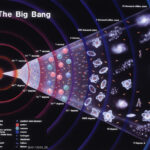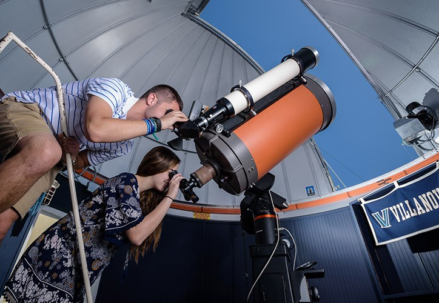This article delves into the extraordinary realm of IC 1101, the colossal galaxy that stands as the largest known in the universe. With an emphasis on its structure, discovery, and significance in the astronomical community, we aim to provide a comprehensive understanding of this galactic behemoth.
From its discovery to its complex characteristics, this journey through the cosmos offers insights into the magnificence of IC 1101 and its pivotal role in our understanding of galactic formations.
Galaxies: The Universe’s Star Cities
Galaxies are vast celestial cities, each harboring billions of stars. Among these, our own Milky Way, a 13.5 billion-year-old spiral galaxy, is well-known, as is Andromeda (M31), our nearest galactic neighbor. These two galaxies are on a slow-motion collision course, set to merge in about 4.5 billion years.
But beyond these familiar faces lies a titan: IC 1101. This galaxy redefines enormity in the cosmos. Its size is so vast that comprehending it requires a deep understanding of cosmic scales.
Grasping Cosmic Distances
When we talk about astronomical distances, we measure them in light-years. One light-year is the distance light travels in a year, roughly 9.46 trillion kilometers. For perspective:
- Light travels at about 300,000 kilometers per second;
- The diameter of the Milky Way is 105,000 light-years.
IC 1101, however, dwarfs our galaxy with a staggering diameter of approximately 6 million light-years.
Understanding these scales is crucial in appreciating the sheer size of IC 1101, where light itself takes millions of years to traverse from one end to the other.
The Largest Known Galaxy: IC 1101
While IC 1101 holds the title of the largest known galaxy, it’s important to emphasize “known.” This distinction means there could be even larger galaxies yet undiscovered. IC 1101 is an elliptical galaxy, characterized by its age, size, and population of older stars.
Types of Galaxies: A Cosmic Classification
Galaxies are classified into three primary types:
- Spiral Galaxies: Like the Milky Way and Andromeda, these feature young stars and active star formation;
- Elliptical Galaxies: These are older, often massive galaxies, like IC 1101, dominated by older stars;
- Irregular Galaxies: Galaxies like the Small Magellanic Cloud, with no defined shape and often older.
This classification system was pioneered by astronomer Edwin Hubble in the 1920s.
Measuring the Cosmos: The Role of “Candles”
Astronomers measure vast distances using celestial “candles” – objects whose distances are well-known, allowing for comparisons. For very distant objects like IC 1101, this method is crucial in determining their place in the universe.
Discovery of IC 1101
IC 1101 was first observed by William Herschel in the 1870s. Initially mistaken for a nebula, it was later reclassified as a galaxy, thanks to Hubble’s groundbreaking work on galaxy classification.
The Psychological Impact of Cosmic Scale
Studies have shown that exposure to the vastness of the universe can evoke feelings of insignificance. However, this can also lead to a sense of wonder and pride in our ability to comprehend our place in the cosmos.
IC 1101’s Role in Understanding Galaxy Evolution
IC 1101 provides crucial insights into galaxy formation and evolution. Its unique characteristics offer valuable clues:
- Size and Structure: Understanding its formation challenges existing theories of galactic evolution;
- Star Population: Analysis of its stars offers insights into the history of the universe;
- Interaction with Surrounding Galaxies: Its gravitational influence on neighboring galaxies reveals the dynamics of galaxy clusters.
IC 1101 in the Context of Galactic Research
The study of IC 1101 has profound implications for astronomy and cosmology:
- It serves as a benchmark for understanding extreme galactic scales;
- The galaxy challenges our understanding of dark matter distribution due to its immense gravitational pull;
- Research on IC 1101 aids in refining our models of the universe’s overall structure.
In exploring such celestial giants, we gain a deeper appreciation for the diversity and complexity of our universe, much like the unique characteristics and intriguing aspects of planets like Saturn.
Conclusion
IC 1101 is not just another galaxy; it’s a cosmic landmark that challenges our understanding of the universe. From its discovery to its current role in astronomical research, IC 1101 continues to fascinate and inspire.
This exploration of IC 1101 reveals not only the physical characteristics of this gigantic galaxy but also its significance in the grand tapestry of the cosmos, reflecting the relentless curiosity and ingenuity of human inquiry.





